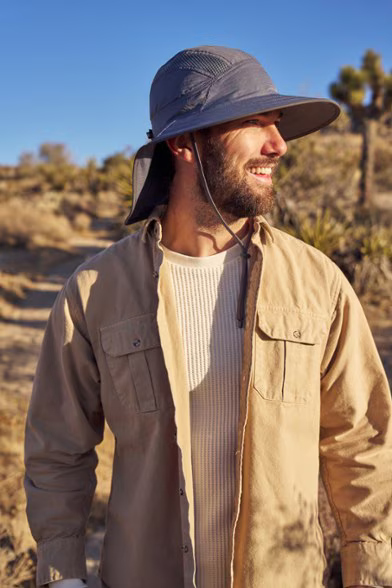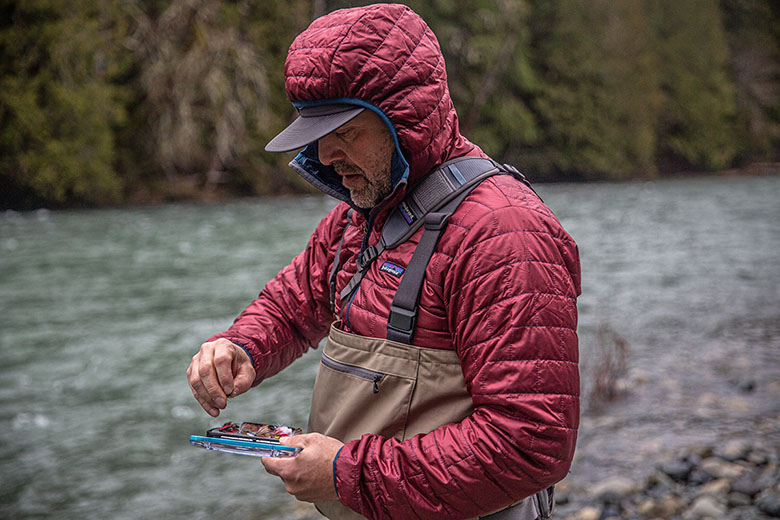Gear Reviews Made Simple
Hiking and Backpacking Clothing Guide | Cap Puckhaber
Disclaimer: I DO NOT EARN ANY COMMISSIONS FOR RECOMMENDING THESE PRODUCTS.
An Experienced Hiker’s Guide to Hiking and Backpacking Clothing by Cap Puckhaber.
Why the Right Clothing is Your Most Important Piece of Gear
When you’re planning your next outdoor adventure, the clothing you choose is the single most important factor. Whether you’re heading out for a short day hike or a multi-day backpacking trip, your clothes can be the difference between a great experience and a miserable one. The right best hiking and backpacking clothing system protects you from the elements, regulates your body temperature, and prevents common issues like chafing, blisters, and sunburn.
I’ve spent years exploring trails across California, the Rockies, and desert canyons, and I’ve put countless pieces of gear to the test. In this guide on TheHikingAdventures.com, I’ll share my personal recommendations and a detailed checklist so you can confidently prepare for your next trip. This isn’t just a generic list. This is my go-to setup, proven in real-world conditions.
Building Your Hiking Clothing System from the Top Down
Every layer of your hiking clothing system serves a purpose. It’s not just about what you wear, but how it all works together. Let’s start from the top and work our way down.
Headwear: Your First Line of Defense
Protecting your head is crucial, as it’s one of the most exposed parts of your body on the trail. A good hat is a critical piece of any hiking clothing list because it helps prevent heatstroke, sunburn, and rapid heat loss in cold weather.
Best Pick: Sunday Afternoon Ultra Adventure Hat
- Wide-brimmed hats: Offer superior sun protection, especially in sunny or high-altitude environments.
- Baseball caps: Lightweight and breathable, they’re perfect for summer hikes.
- Wool or fleece beanies: Ideal for keeping warm on chilly mornings or at higher elevations.
When selecting headwear, look for moisture-wicking, quick-drying materials that keep sweat from building up.
Neck Gaiters and Balaclavas: Versatile Protection
Best Pick: Smartwool
Thermal Merino Reversible Neck Gaiter
These items are often overlooked but are essential for dealing with dust, wind, and sun. They pack down small and weigh almost nothing, making them an easy addition to any pack.
- Neck gaiters (or buffs): Highly versatile. Wear them as a scarf, headband, face cover, or even a makeshift beanie. They are fantastic for blocking UV rays, trail dust, and pesky bugs.
- Balaclavas: Provide full-face protection in cold, windy, or alpine conditions.
I always carry a neck gaiter in my bag. When the wind picks up or the bugs start biting, it’s a simple piece of gear that makes a huge difference. Check out REI for the latest headwear.
Shirts: The Foundation of Your Upper Body System
Your hiking shirt is the base layer for your upper body. The right choice is a huge part of the best hiking and backpacking clothing equation. You need a shirt that wicks moisture, dries quickly, and is comfortable under other layers.
Best Pick: REI Co-op
Sahara Shade Hoodie – Men’s
Choosing the Right Material and Style
Materials:
- Merino wool: My personal favorite. It’s naturally odor-resistant, breathable, and comfortable for multi-day treks.
- Synthetic blends: Affordable, durable, and quick-drying. These are a reliable and cost-effective option.
Styles:
- Short vs. Long Sleeve: Short sleeves are great for ventilation, while long sleeves offer better protection from the sun and insects.
- Hooded Shirts: Sun hoodies are a game-changer. They provide added UPF protection for your neck and ears, which is a huge plus in intense sun.
Avoid cotton at all costs. Cotton absorbs moisture and holds it against your skin, which can lead to chafing and a significant risk of hypothermia in cooler conditions. For men, I highly recommend sun hoodies with a high UPF rating and flatlock seams for maximum comfort.
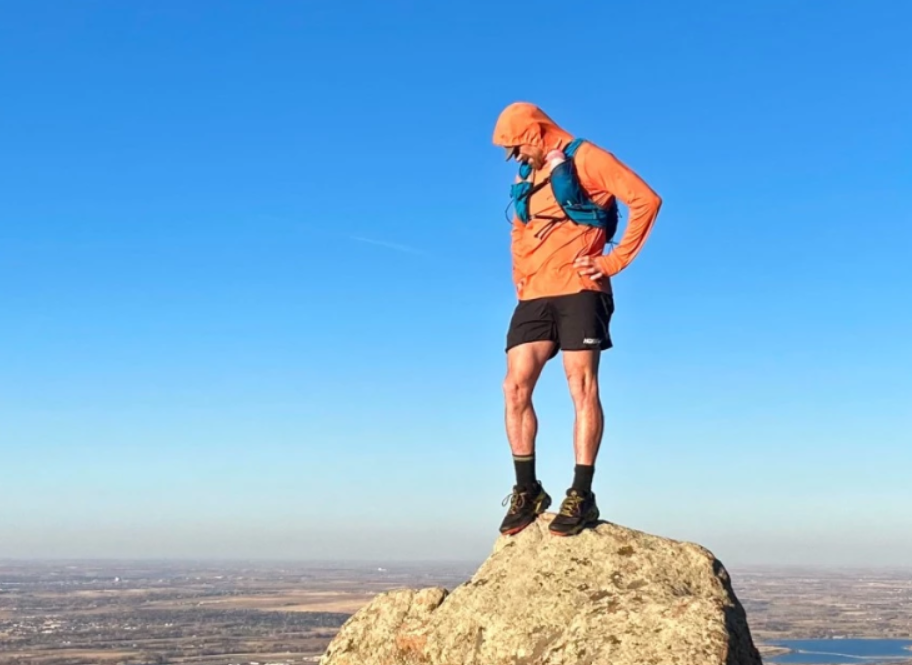
Pants, Shorts, and the Art of Adaptability
What you wear on your legs should be determined by the specific trail and weather forecast. The best hiking gear for men and women includes bottoms that are both protective and comfortable.
Best Pick: Mountain Hardwear
Hardwear AP Active Crossover Pants – Men’s
Finding the Right Fit for Your Hike
- Hiking Shorts: Lightweight and offer excellent ventilation in hot weather. Look for options with secure, zippered pockets and water-resistant materials.
- Hiking Pants: Provide better protection against sun, ticks, and abrasive brush. Look for stretchy materials and articulated knees for a greater range of motion.
- Convertible Pants: The most versatile option. With zip-off legs, you can adapt to changing conditions without needing to carry a second pair of pants. They’re a favorite among long-distance backpackers for good reason.
I find convertible pants a solid middle-ground, especially for trips with unpredictable mountain weather.
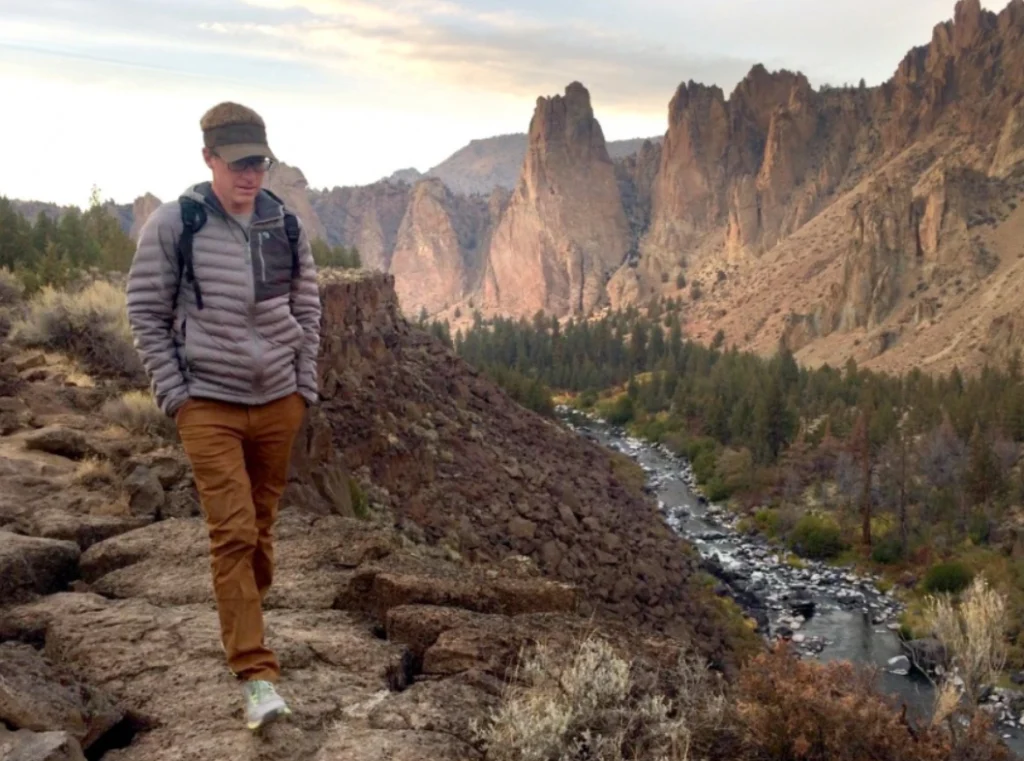
The Layering System: Insulation and Outerwear
Proper layering is the secret to staying comfortable in variable conditions. You should always build your system with three layers: a base, an insulation layer, and a protective shell.
Best Pick: Patagonia Nano Puff Hoodie
Insulating Layers: Fleece and Puffy Jackets
- Fleece: Lightweight and breathable, fleece is ideal for cool mornings or evenings around camp. While not windproof, it’s easy to pack and perfect for adding a bit of warmth.
- Puffy Jackets: The ultimate insulation.
- Down insulation: Offers an incredible warmth-to-weight ratio for dry conditions.
- Synthetic insulation: Performs better when wet and is often more affordable.
Both types of jackets should compress well into a stuff sack. Always carry an insulating layer in your pack, even on a day hike. Mountain weather changes quickly.
Rain Shells: Your Final Layer of Defense
A good rain shell is your essential storm protection. It must be both waterproof and breathable.
- Features to look for: Pit zips, adjustable hoods, and hem cinches are all crucial for controlling airflow and preventing sweat from building up.
Remember, a rain shell is only effective if it allows sweat to escape. Trapped moisture will chill you as soon as you stop moving.
Socks: The Unsung Heroes of Trail Comfort
This might sound like a small detail, but your choice of socks is one of the most crucial parts of your hiking clothing list. Poor socks can lead to blisters, hot spots, and a miserable time on the trail.
Best Pick: Darn Tough Crew Cushion Sock
Choosing the Best Socks to Prevent Blisters
- Merino wool: My top recommendation. It’s soft, breathable, and naturally antimicrobial.
- Synthetic blends: Durable and moisture-wicking, they’re a great alternative to wool.
- Double-layer socks: Some hikers swear by these for their ability to prevent blisters.
Always look for seamless toes, cushioned soles, and a snug but not tight fit. I recommend bringing one pair of socks for each day of your trip, plus an extra pair for sleeping.
Footwear Integration
Socks are only half the equation. The best hiking gear for men (and anyone) also includes footwear that matches your hike’s demands. Trail runners are great for agility and breathability, while hiking boots offer superior ankle support and durability on rugged trails.
Pair good socks with properly broken-in shoes, and your feet will thank you every mile.
Cap Puckhaber’s Recommended Hiking Clothes Checklist
Gear Checklist for Your Next Adventure
Here is a quick recap of the essentials for your hiking clothing system:
- Headwear: A wide-brimmed hat or cap for sun protection.
- Neck Gaiter: A versatile layer for dust, wind, and cold.
- Shirt: A long-sleeve, moisture-wicking shirt (a sun hoodie is my top pick).
- Pants or Shorts: Quick-drying and protective.
- Mid-Layer: A lightweight fleece or synthetic jacket for insulation.
- Puffy Jacket: A packable down or synthetic jacket for warmth.
- Rain Shell: A waterproof and breathable jacket for storms.
- Socks: Multiple pairs of wool or synthetic socks to prevent blisters.
Dressing properly is your first line of defense against the elements. Whether you’re tackling a rugged alpine pass or a mellow forest trail, having the right gear is key to staying safe and comfortable. At TheHikingAdventures.com, we are committed to helping you explore the outdoors with confidence. The best hiking and backpacking clothing isn’t just about style or brand; it’s about function and durability. Think lightweight, breathable, and adaptable. With this hiking clothing list in your pack, you’ll be prepared for anything the wild throws your way. Check out my overnight backpacking essentials here.
More Blogs from Cap Puckhaber

Follow Cap Puckhaber on Social Media

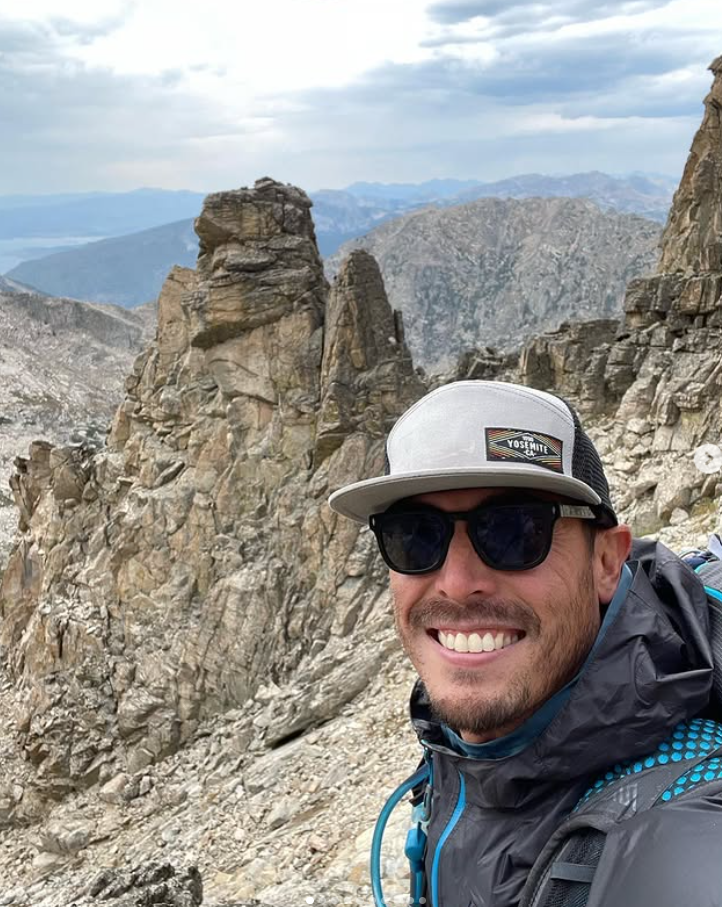
Cap Puckhaber
Backpacker, Marketer, Investor, Blogger, Husband, Dog-Dad, Golfer, Snowboarder
Cap Puckhaber is a marketing strategist, finance writer, and outdoor enthusiast from Reno, Nevada. He writes across CapPuckhaber.com, TheHikingAdventures.com, SimpleFinanceBlog.com, and BlackDiamondMarketingSolutions.com.
Follow him for honest, real-world advice backed by 20+ years of experience.
